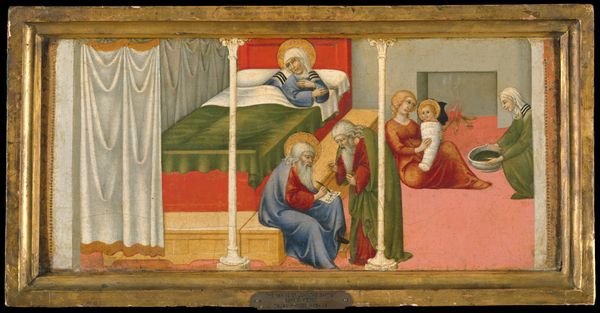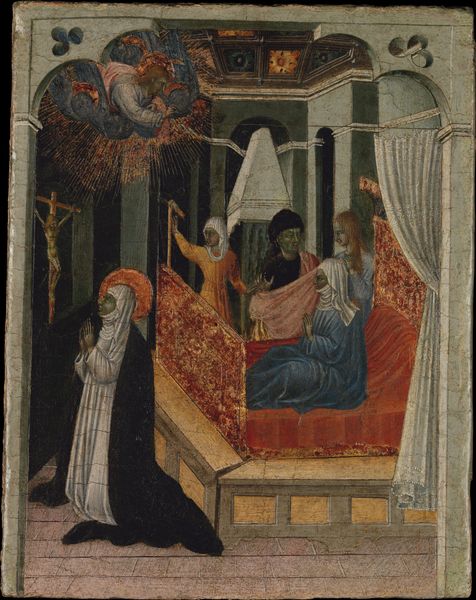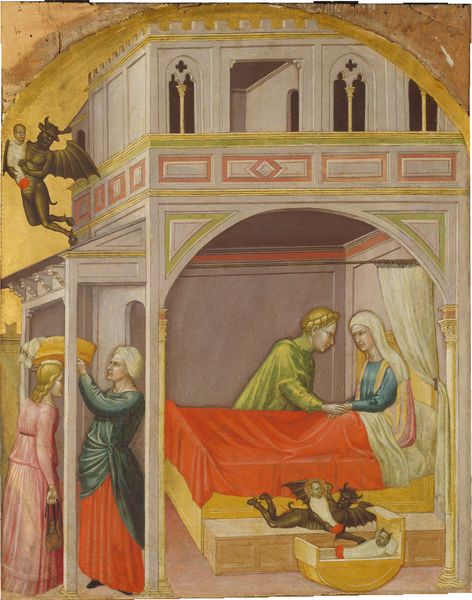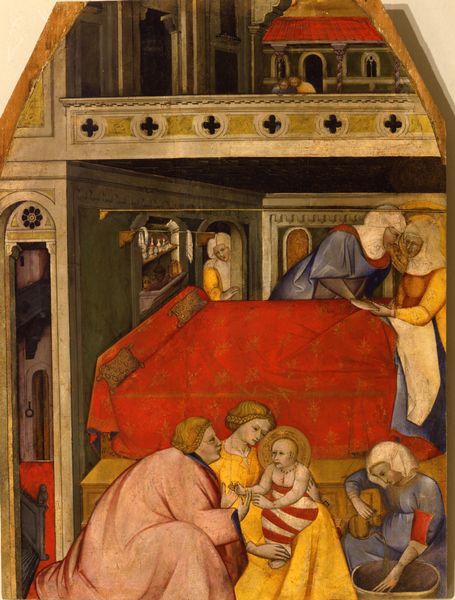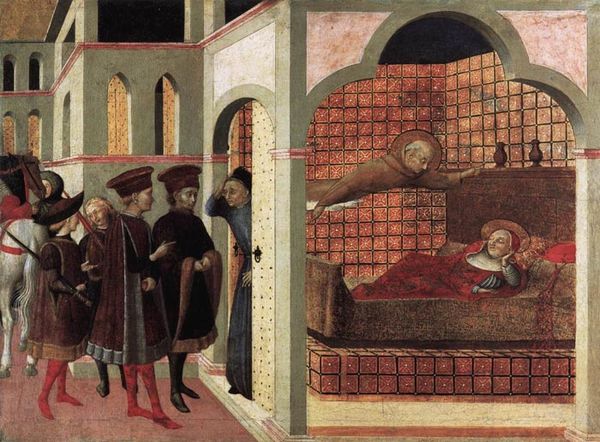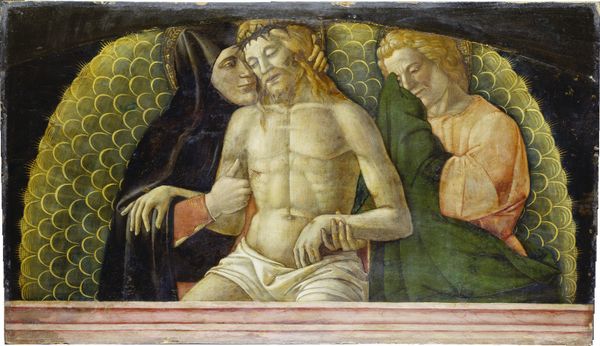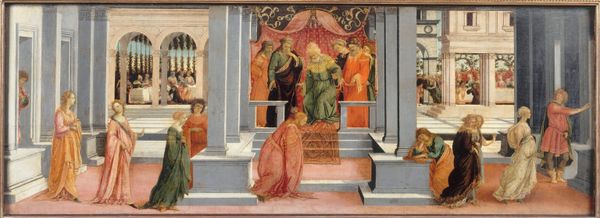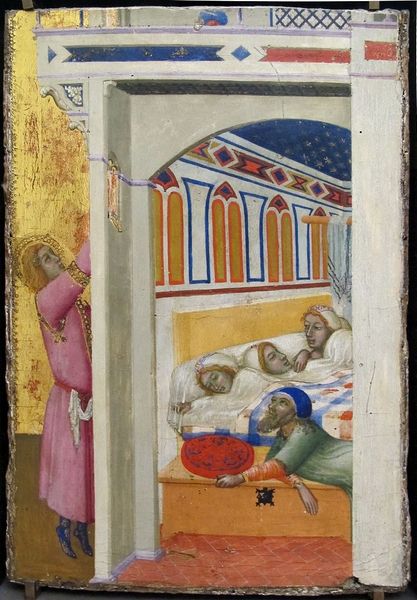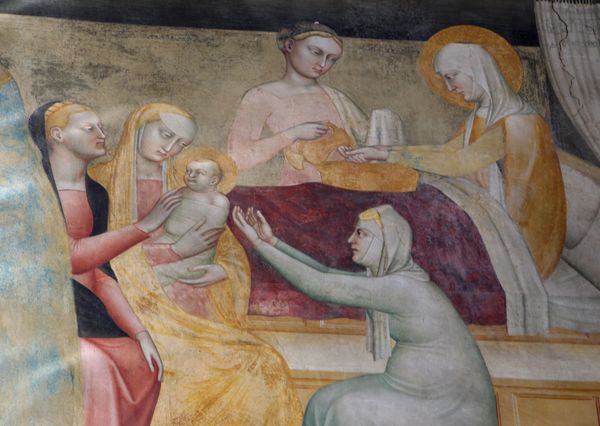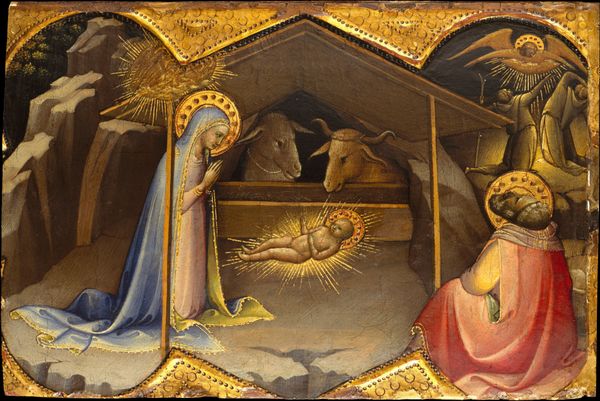
The Burial of Saint Martha 1455 - 1465
0:00
0:00
panel, tempera, painting
#
panel
#
narrative-art
#
tempera
#
painting
#
figuration
#
handmade artwork painting
#
men
#
history-painting
#
italian-renaissance
#
angel
Dimensions: 5 1/2 x 11 1/2 in. (14 x 29.2 cm)
Copyright: Public Domain
Editor: Here we have Sano di Pietro's "The Burial of Saint Martha," painted in tempera on a panel between 1455 and 1465. It has such a serene feeling, even though it depicts death. How do you interpret this work, especially considering its historical context? Curator: Well, considering this was commissioned during the Italian Renaissance, a period heavily influenced by the Church, it’s not just about Martha's death but the social function this painting would have served. How do you think depictions of saints functioned within the religious and political landscape of the time? Editor: I imagine they were a powerful tool, reminding people of faith and proper conduct while also reinforcing the Church's authority. The halos, the bishop... they all point to a certain hierarchy. Curator: Precisely! And it’s worth noting the use of tempera. It allowed for fine details, emphasizing the richness the Church wanted to project. But beyond religious messaging, think about its intended audience. Who was likely viewing this, and how might their socio-economic status shaped their interpretation of the painting? Editor: Wealthy patrons, probably? Perhaps they saw it as a reflection of their own piety and status. Commissioning art like this was probably a way of legitimizing their power. Curator: Exactly. The "Burial of Saint Martha" wasn't simply about mourning a saint; it reinforced social structures, conveyed political messages, and, quite frankly, it made a statement about patronage and power. Editor: I never thought about a painting of Saint Martha carrying so much political weight! It's really fascinating how deeply intertwined art, religion, and power were. I’ll definitely be thinking about art with a broader, more critical eye going forward. Curator: Glad to help see this come to light! There is always more than meets the eye in history.
Comments
No comments
Be the first to comment and join the conversation on the ultimate creative platform.
